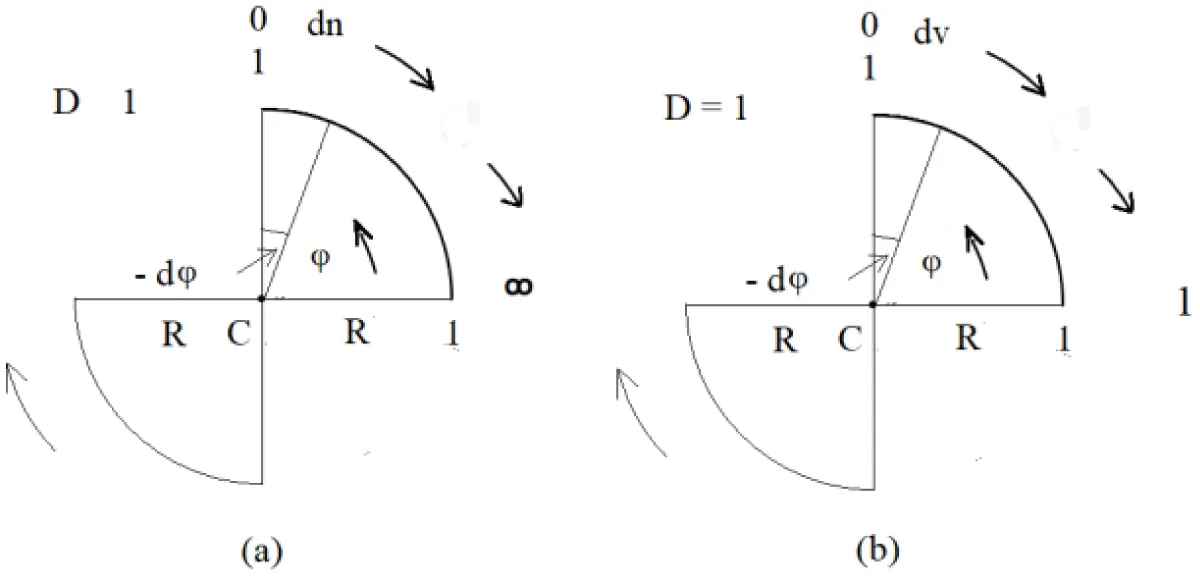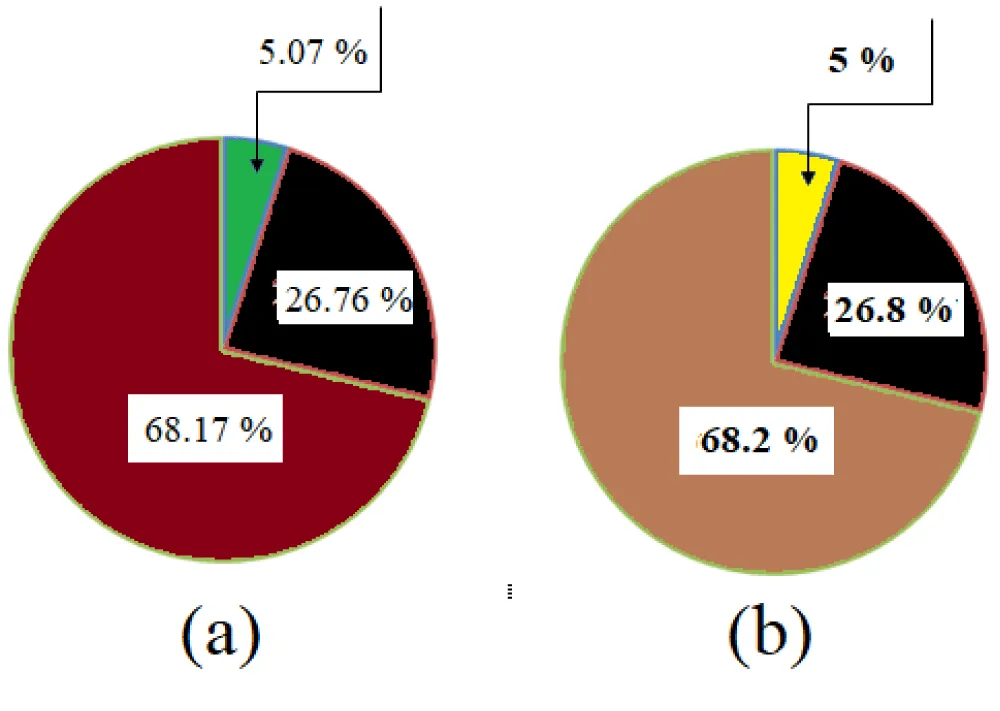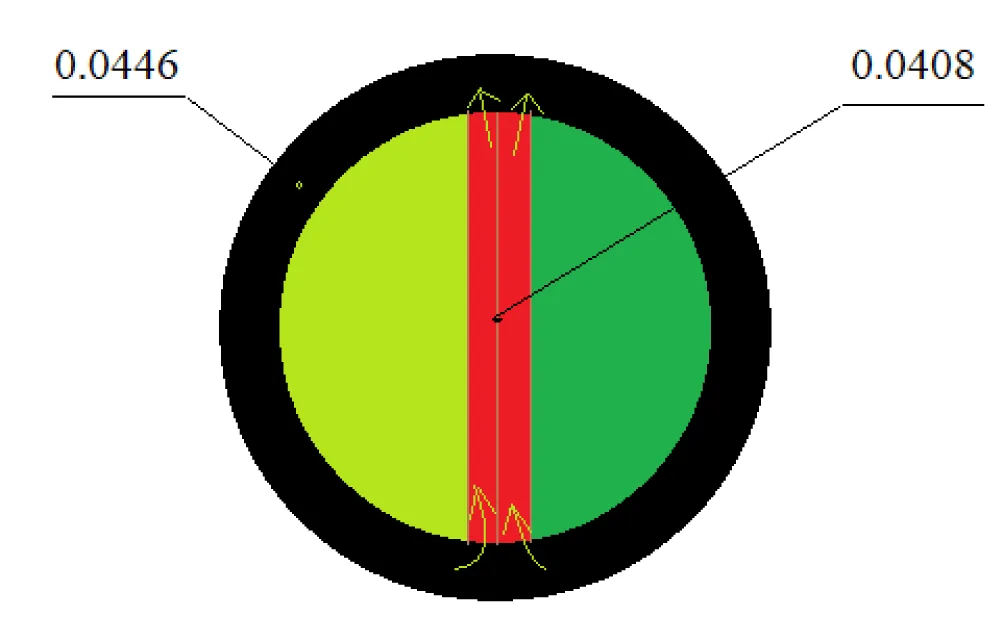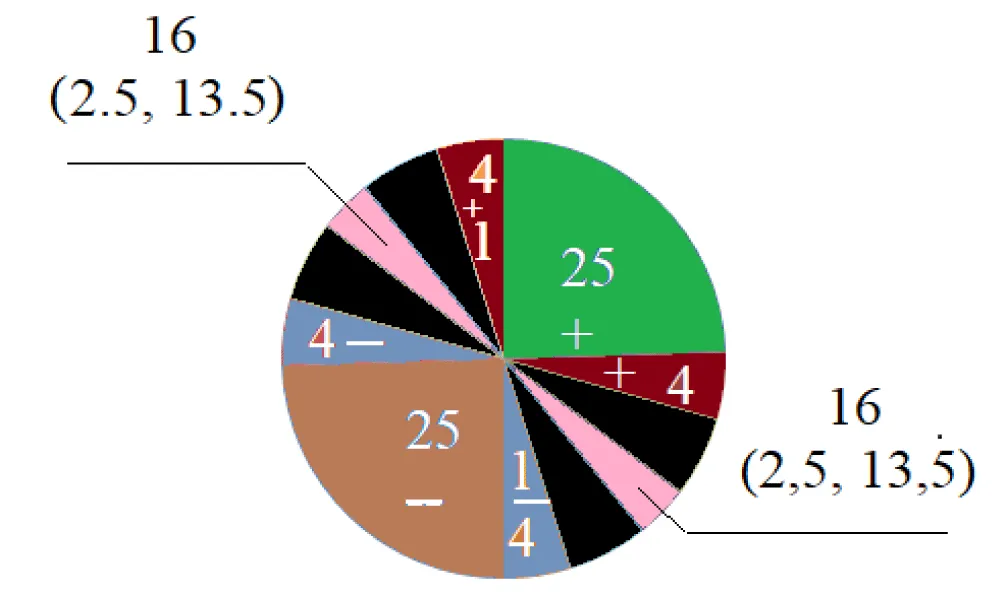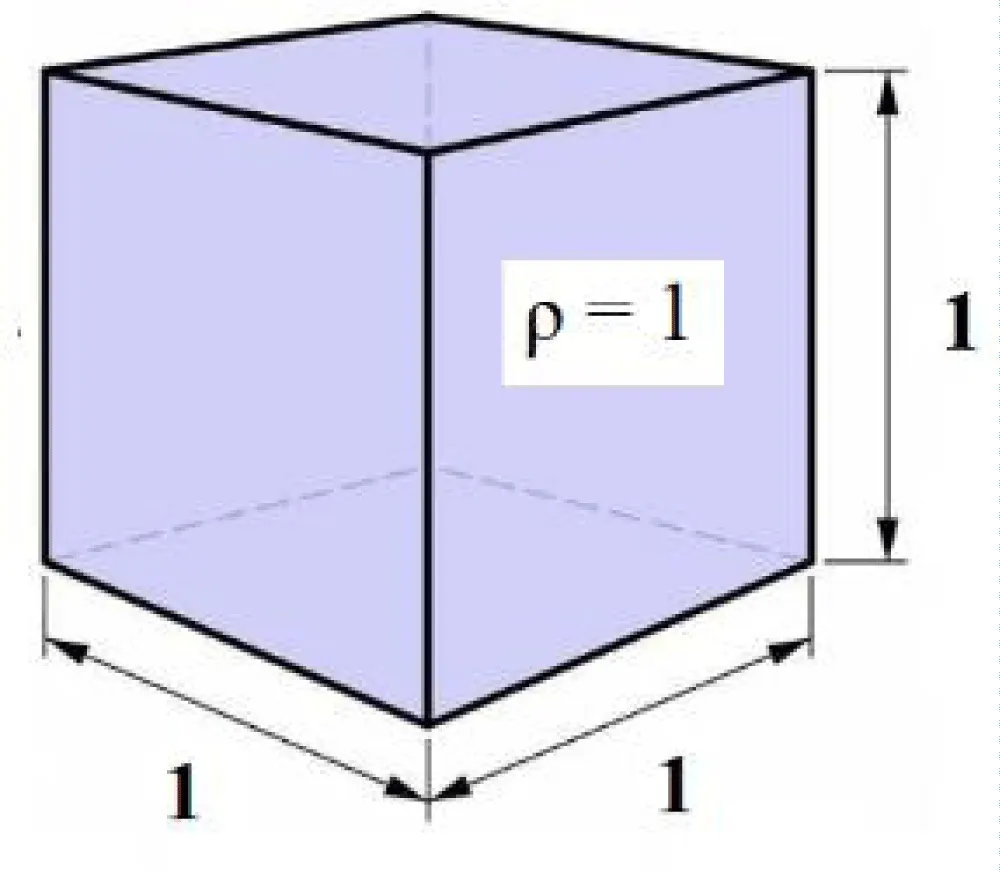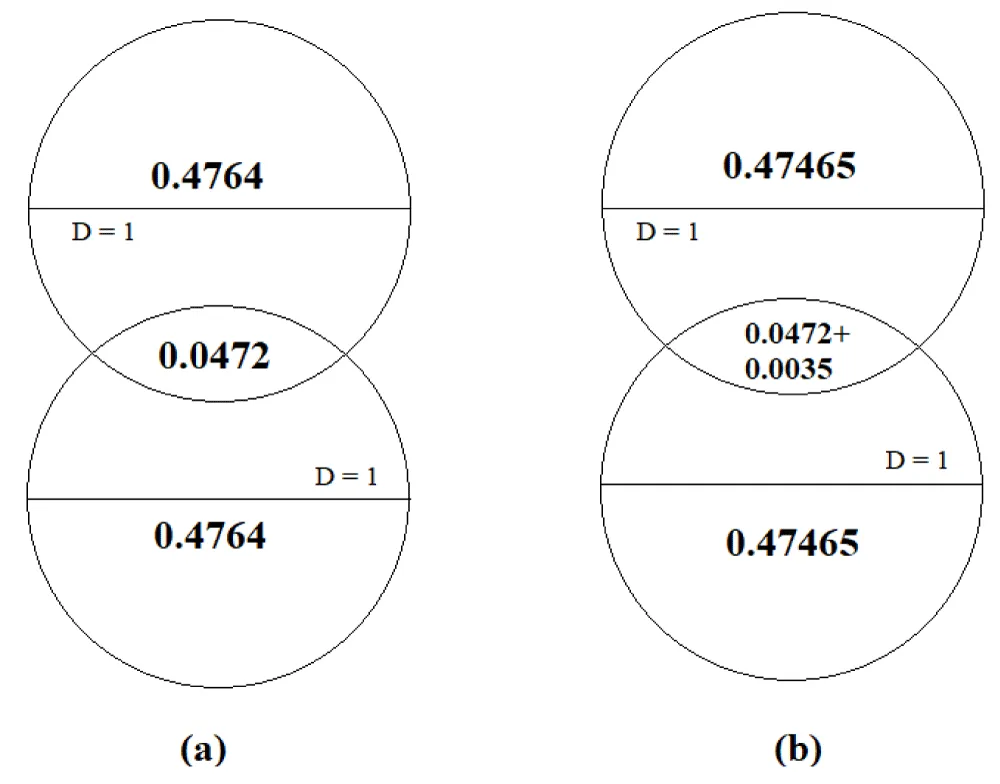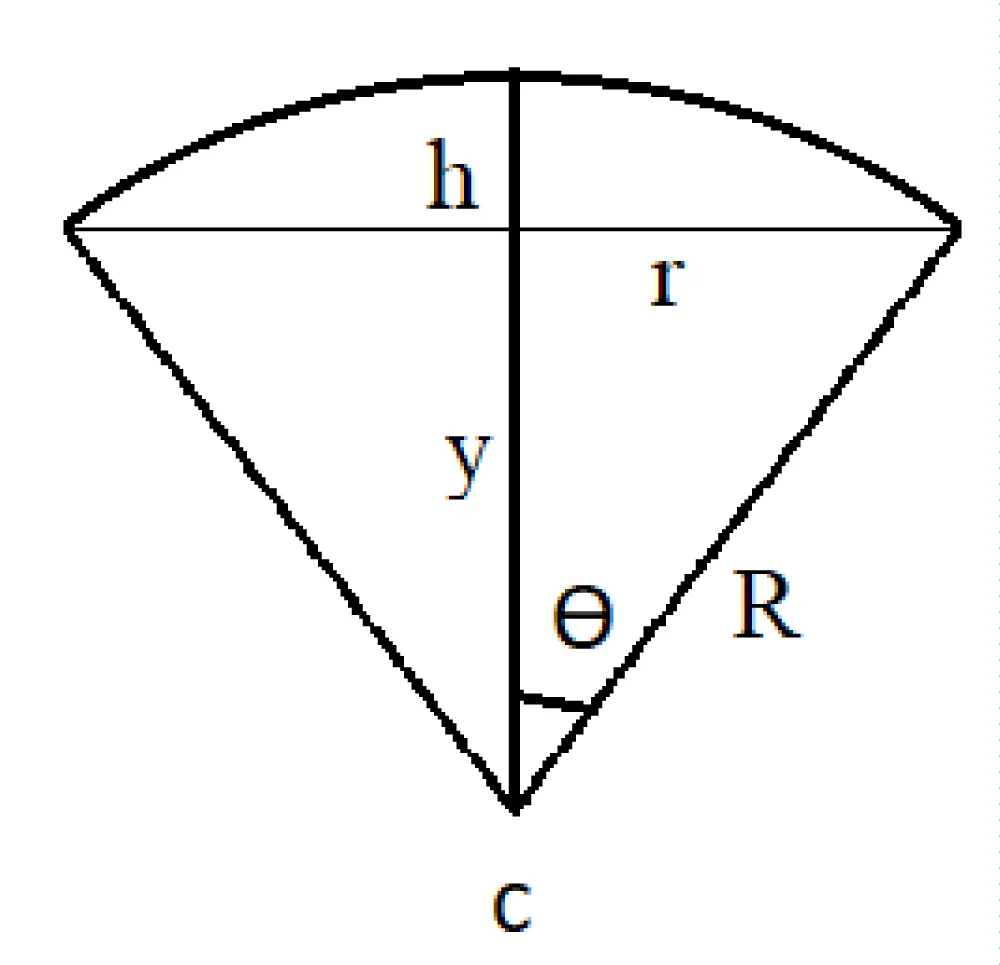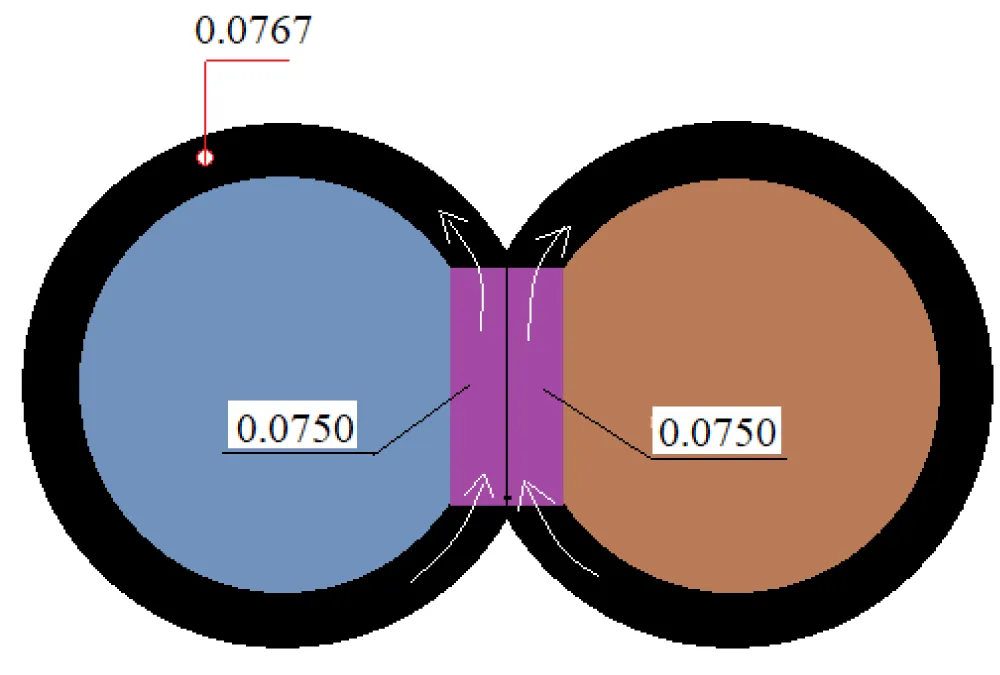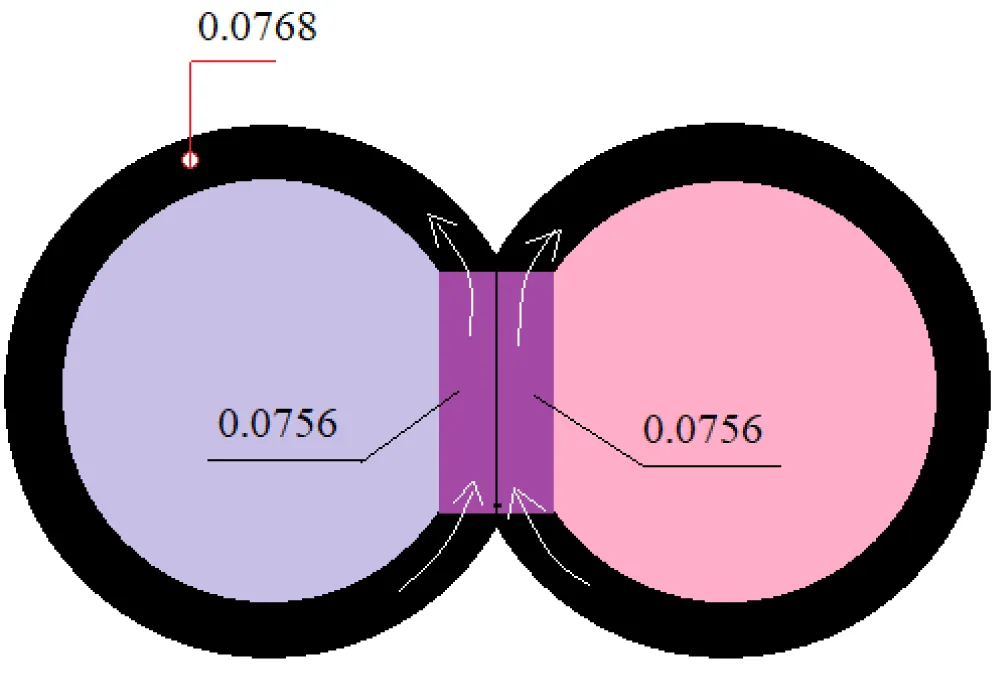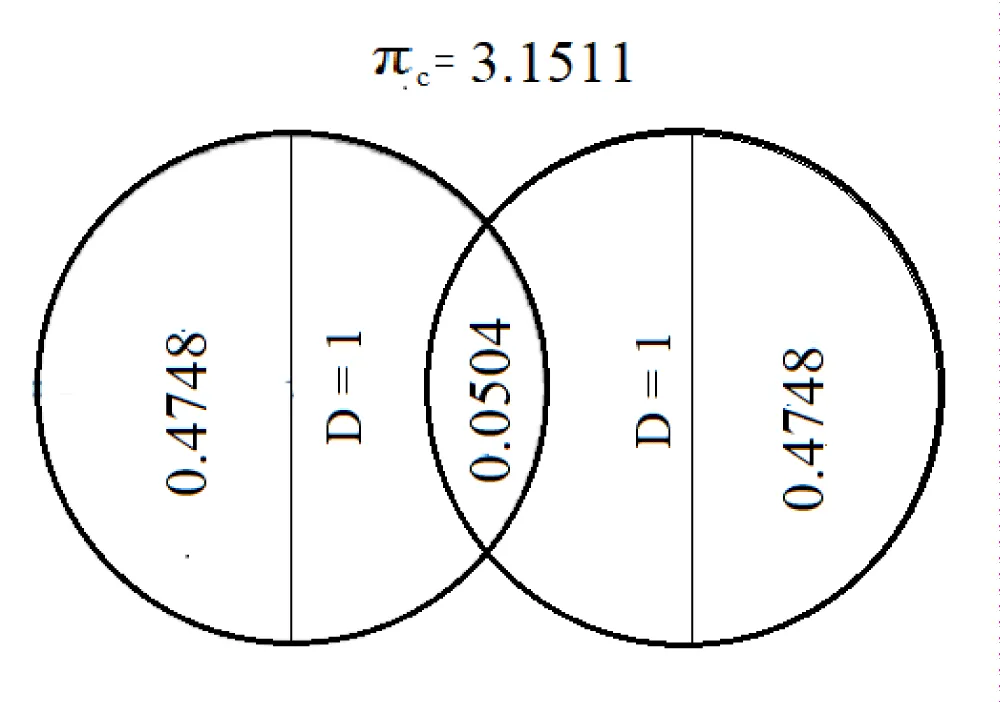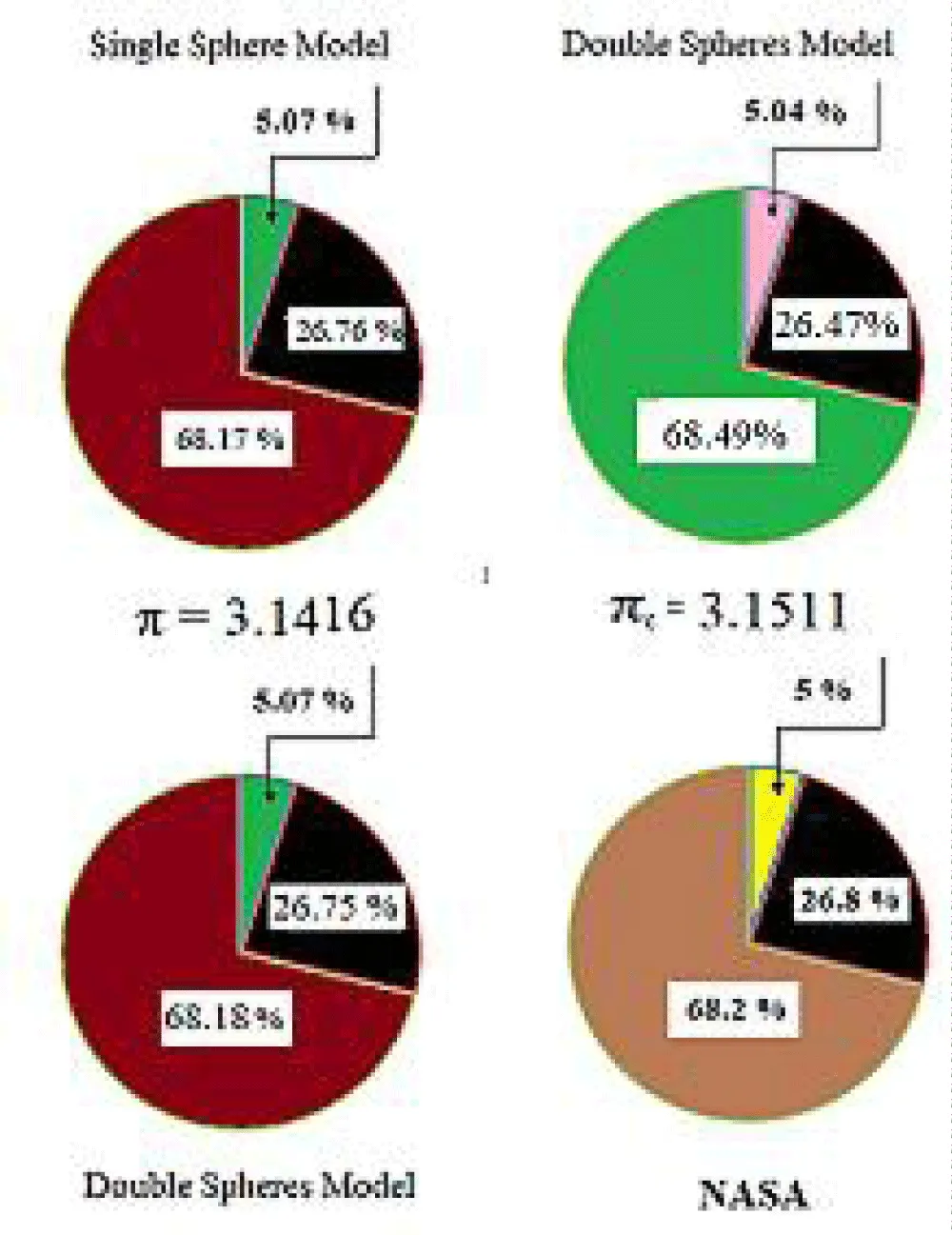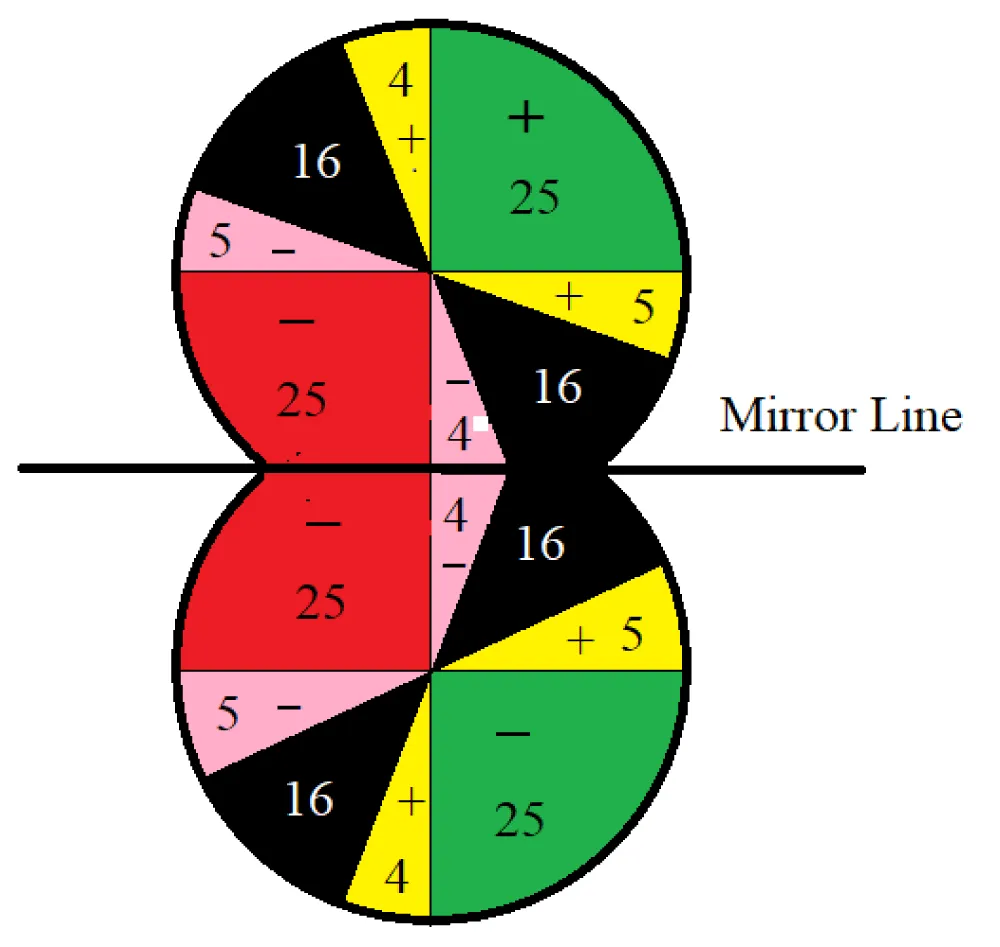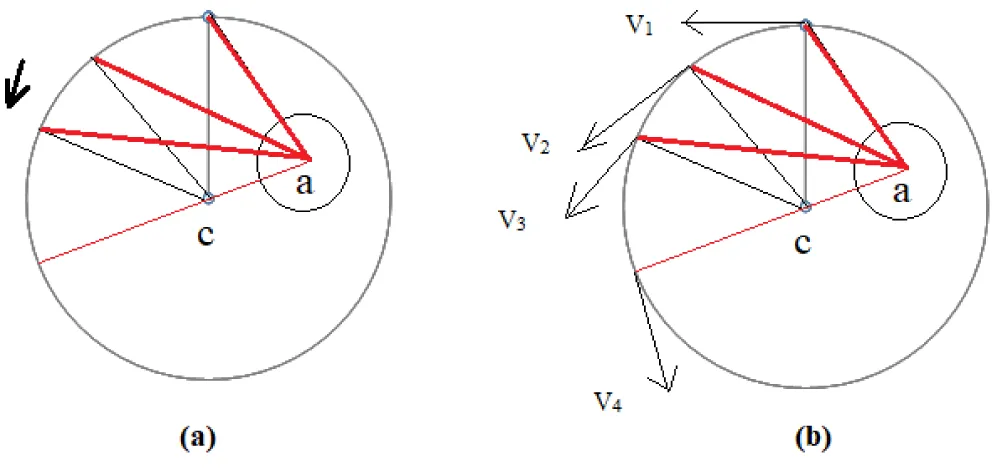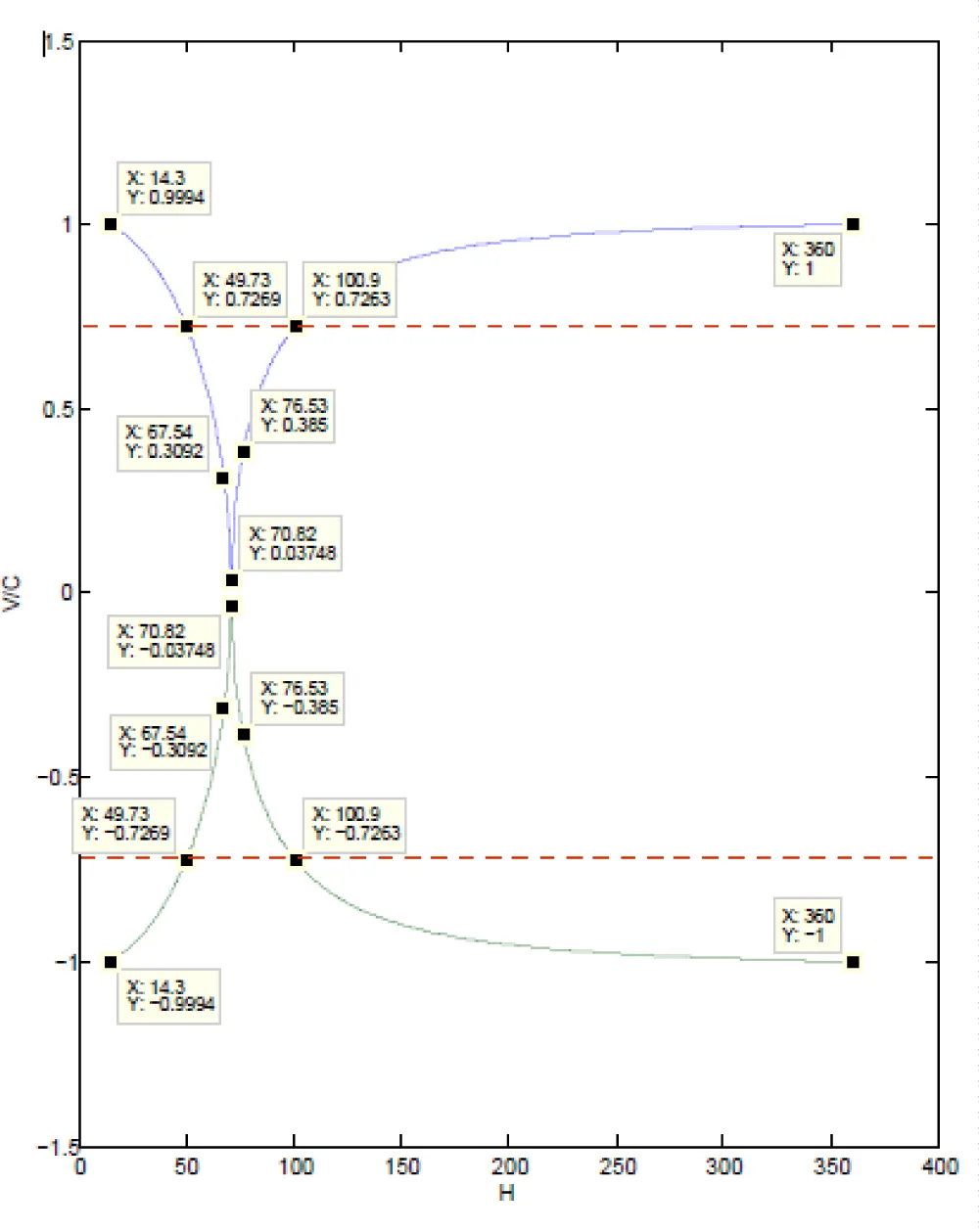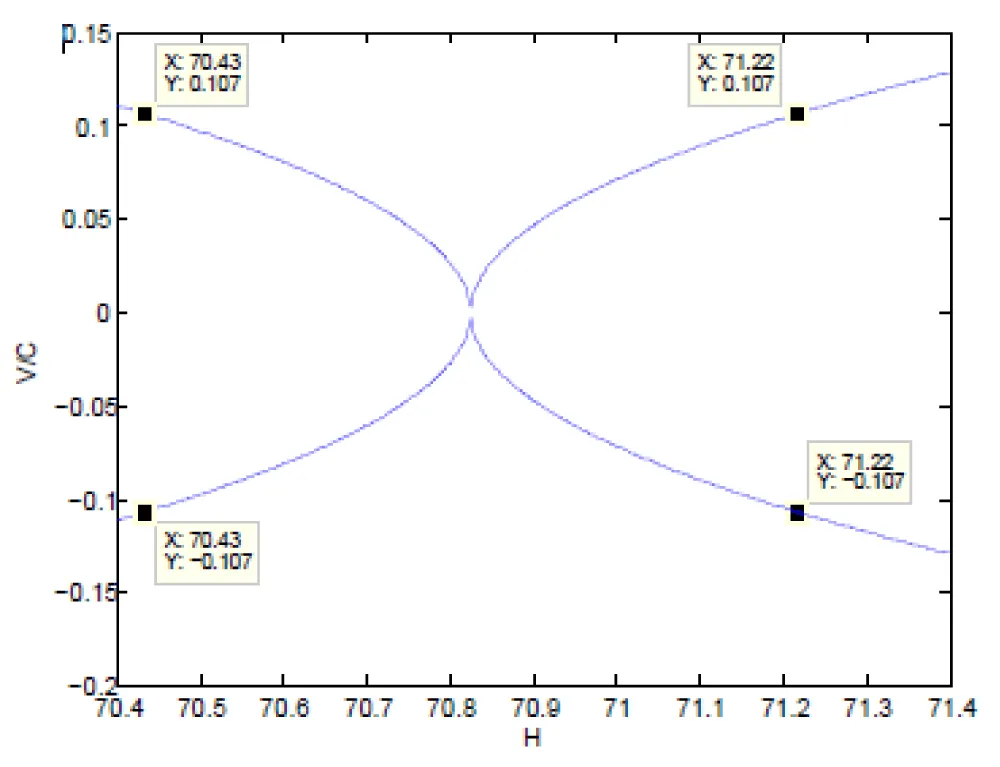More Information
Submitted: August 13, 2025 | Approved: September 09, 2025 | Published: September 10, 2025
How to cite this article: Elescandarany AW. Rational Unity and Total Constant A New Perspective on the Universe. Int J Phys Res Appl. 2025; 8(9): 268-282. Available from:
https://dx.doi.org/10.29328/journal.ijpra.1001135
DOI: 10.29328/journal.ijpra.1001135
Copyright license: © 2025 Elescandarany AW. This is an open access article distributed under the Creative Commons Attribution License, which permits unrestricted use, distribution, and reproduction in any medium, provided the original work is propeRLy cited.
Keywords: Ordinary matter; Dark matter; Dark energy; Big bang model; ɅCDM mode
Rational Unity and Total Constant A New Perspective on the Universe
Ahmad Waguih Elescandarany*
Faculty of Engineering, Alexandria University, Lotfy el Sayed Street, Ebrahimia, Alexandria, Egypt
*Address for Correspondence: Ahmad Waguih Elescandarany, Faculty of Engineering, Alexandria University, Lotfy el Sayed Street, Ebrahimia, Alexandria, Egypt, Email: [email protected]
The Universe consists primarily of dark energy, dark matter, and ordinary matter. The studies of recent models, such as the Big Bang and the ɅCDM, show that the fractional composition of the universe is approximately 4%-5% ordinary matter, 26%-27% dark matter, and 67%-72% dark energy. This study proposes a novel mathematical engineering model, grounded in first-principles physics, that utilises a novel mathematical tool to deliver precise composition estimates: 5.07% ordinary matter, 26.76% dark matter, and 68.17% dark energy. These closely align with NASA's WMAP & Planck data as well as the ɅCDM model. The application of the mathematical tool enhances solutions to the Einstein equation of special relativity, and the Schwarzschild metric introduces correction factors. These aim to eliminate singularities through logic-based engineering techniques. Moreover, cosmic dynamics and black hole evolution calculate the Universe expansion speed: 0.104 of the light speed, estimate the Hubble constant: ~ 71 km/s/Mpc, propose that stars undergo 21 collapses or 7 distinct stages to become black holes, suggest the universe may currently exist as a neutron entity or a black hole, and predict the existence of 286 ancient massive entities.
Nomenclature
A: Area; C: Light Speed; Cf: Correction Factor; D: Diameter; DM: Dark Matter Mass; DEM: Dark Energy Mass; Fr: Relativistic Factor Correction = 0.98; G: Gravitational Constant; H: Cap Height; H0: Hubble Constant; Inf.: Infinity; L: Cylinder of the Dark Matter Length; ΛCDM: Lambda Standard Cosmological Model; mo: Mass at Rest; m: Relativistic Mass; M: Mass and/or Matter; n: Number, Number of Collapses; N: Numbers Summation, Stages; OM: Ordinary Matter Mass; r: Common Domain (Crucible) Radius; R: Sphere Radius; SM: Surface Area Mass; t: Dark Matter Thickness, Time; v: Mass Velocity; V: Volume, Value, Velocity
Latin
Λ: Lambda; Ɵ: Half Angle of the Spherical Cap; Δ: Difference between the Countable and Common Masses; Ƴ: Relativistic Factor; Ꙍ: Angular Velocity; φ: General Angle; π: Infinity; ῤ: Density; π: Pi = 3.1416; πc: Corrected (Pi) = 3.1511; Σ: Summation
Suffix
☉: Sun; c: Correction; com: Common; coun: Countable; d: Dark Matter; de: Dark Energy; cap: Cap; H: Hubble; n: Neutral; ou: Observed Universe; p: Primary; r: Radial; s: Surface, Schwarzschild, Sun; sph: Sphere; t: Tangential; v: Value; u: Universe; z: Collapse; +: For Matter; -: For Antimatter.
The origin, evolution, and nature of the Universe have long fascinated and confounded humankind. New ideas and major discoveries made during the 20th century transformed cosmology – the term for the way scientists conceptualise and study the Universe – although much remains unknown. Current theories have been studying the Universe's initiation, inflation, structure, and activities. For many years, scientists thought the Universe’s current expansion was slowing down. The theories explore the inflation, structure, and dynamics. For many years, scientists believed its expansion was decelerating. But in fact, cosmic expansion is speeding up. A few years ago, astronomers found that certain supernovae, bright stellar explosions, were fainter than expected. They concluded this could only happen if the supernovae had moved farther away, at a faster rate than predicted. Scientists suspect a mysterious substance called dark energy is accelerating expansion. Future research may yield new surprises, but cosmologists suggest it’s likely the Universe will continue to expand forever [1]. An upper limit of the average ratio of dark matter to ordinary matter in galaxies is estimated to be 5.4, in agreement with the observed ratio of 5.4. The upper limit of the average ratio of dark energy to ordinary matter for slowly moving protons in the outer parts of the Universe is estimated to be 8, much less than the observed ratio of 13.6. The discrepancy is tentatively attributed to the bulk of protons in these outer parts of the Universe rapidly moving, and their contribution to dark energy has not been estimated. The positive and negative relative energies between the diquark and quark in the proton play the roles of dark energy and dark matter, respectively [2]. The current multiple components that form our Universe (as the fractions evolve with time): dark energy equals 69% of the mass-energy density of the Universe, dark matter comprises 25%, and “ordinary” atomic matter makes up 5%. There are other observable subdominant components: Three different types of neutrinos comprise at least 0.1%, the cosmic background radiation makes up 0.01%, and black holes comprise at least 0.005% [3]. Most normal matter is made up of atomic particles: protons, neutrons, and electrons. It can exist as a gas, a solid, a liquid, or a plasma of charged particles. While normal matter is everywhere in our daily lives, it comprises less than 5% of the total Universe. While scientists have measured that dark matter makes up about 27% of the cosmos, they’re not sure what it is. Theories include several kinds of as-yet-unidentified sorts of particles that rarely interact with normal matter. Dark energy may compose roughly 68% of the Universe, but scientists know even less about it than they do about dark matter. But something like dark energy must exist to explain the Universe’s accelerating expansion [4]. It is stated that visible matter comprises less than 5% of the total Universe, dark matter makes up around 27%, and dark energy may roughly compose 68% of the Universe [5]. The new estimate of dark matter content in the Universe is 26.8%, up from 24%; dark energy falls to 68.3%, down from 71.4% and normal matter is 4.9%, up from 4.6% [6]. The dark matter makes up a larger portion of the Universe than the matter we know and detect, at 26.8%; ordinary matter is 4.9% and 68.3% dark energy. Fractional composition of the Universe: dark matter and dark energy dominate the composition of the Universe, with baryons only making up around 5%. The contributions from radiation and relativistic particles are too small [7]. In the standard Lambda cosmological model (ɅCDM), the mass-energy content of the Universe is 5% ordinary matter, 26.8% dark matter, and 68.2% a form of energy known as dark energy [8]. The expansion of the universe refers to the increase in distance between gravitationally unbound parts of the observable universe over time. It is an intrinsic expansion, so it does not mean that the universe expands "into" anything or that space exists "outside" it. To any observer in the universe, it appears that all but the nearest galaxies (which are bound to each other by gravity) move away at speeds that are proportional to their distance from the observer, on average. While objects cannot move faster than light, this limitation applies only for local reference frames and does not limit the recession rates of cosmologically distant objects [9]. In 1929, Hubble got a value of about 500 km/s/Mpc. More accurate measurements dropped this to about 100 km/s/Mpc by about 1960, but the astronomical community became divided into two camps, one championing 100 km/s/Mpc and the other 50 km/s/Mpc. Solving this problem became one of the key projects of the Hubble Space Telescope (HST), and in 2001, the HST astronomers determined that the speed is 72 km/s/Mpc. Astronomers were finally happy, but their happiness did not last more than a few years. Recent accurate measurements obtained from the cosmic microwave background reveal values of 68 km/s/Mpc. Measurements using observations obtained by HST still give values of about 72 km/s/Mpc. This disagreement has been called the “Hubble tension”, and it has not yet been resolved [10-12]. An exact solution to the Einstein field equations for the gravitational field outside a non-rotating, spherically symmetric body with mass was obtained in 1916 by Karl Schwarzschild. The solution contained terms of such a form that had singularities. The physical significance of these singularities was debated for decades [13]. The objective of this study is to present an unconventional perspective on the universe through a novel approach to understanding its properties.
The Number and Value (N-V) Scale
The Unity functions as a number and a value where it never increases. Other numbers are fractions of the Unity, i.e, (relational unities).
The relation between the number and its value
The New Mathematical Tool using the numbers:
The Unit is the singular entity (total constant) that does not increase or decrease.
The conventional numbers (1, 2, 3 ….inf.) are rational unities (segments).
The value is the Unity divided by the number that is never greater than one.
This tool uses infinity as a final number with the aid of the (N-V) scale
(1)
(2)
| Table 1: Numbers – Values Scale. | ||||||
| Numbers | 1 | 2 | 3 | 4 | --- | π |
| Values | 1 | 1/2 | 1/3 | 1/4 | --- | 0 |
From Figure (1-a):
(3)
The new mathematical tool using the values:
From Figure (1-b):
(4)
Figure 1: (a) The Unity rotation due to the addition; (b) The Unity rotation due to the value addition.
Where:
Hence, the value of the final number (Infinity), regardless of the proofing method, is:
Nv = - 0.0795454 or V = - 0.0795454 (5)
The relative value of the final number
(6)
Finally:
(7)
It should be clear that the negative signs of (V) and (φ) do not mean except the inverse proportion.
Thus (σ) represents approximately (5%) of the total constant.
- The Universe has a spherical shape.
- The sphere diameter is the unity.
- The sphere consists of an infinite number of entities.
- The sphere density is unity
The sphere density is unity.
Hence, the Universe could be treated as a single sphere.
Estimating the mass of the countable entities: Considering the Universe as a huge sphere consisting of an infinite number of entities and applying the present new mathematical scale, the value of this number is (σ), which equals (- 0.0795454) and represents (5.07%) of the total mass or volume (the total Constant). This means that the mass (ordinary or visible matter, OM) of the countable entities of the Universe represents only (5.07%) of the total mass.
Estimating the mass of the sphere envelope: The sphere envelope is the mass forming the sphere surface area, hence the surface area is:
As the area (A) is a number, then the present new mathematical scale could be applied to calculate its value:
(8)
Then:
The mass of the envelope (SM) is (31.83%) of the total mass.
Estimating the mass of the dark matter: Expecting that the mass building the envelope consists of the visible matter contained in invisible matter, then:
The invisible matter (Dark Matter) could be estimated as:
DM = 0.3183 - 0.507 = 0.2676 (9)
Hence, the dark matter forms (26.76%) of the total mass.
Estimating the mass of the dark energy: It is expected that the rest of the mass is the Dark Energy.
DEM = 1 – 0.3183 = 0.6817 (10)
DEM = 68.17% of the total mass.
This means that the mass of what is called the Dark Energy may form the core of the Universe. Figure 2 shows a comparison between the present results and the recent results of NASA.
Figure 2: Percentage components of the Universe due to this research. (b) The percentage components of the Universe due to NASA.
The matter components as a function of (π)
OM = 1/2π2
SM = 1/π
DM = 1/π - 1/2π2 = (2π - 1)/2π2
DE M= 1-1/π = (π - 1)/π
The Universe configuration dimensions
The dark matter thickness:
(11)
The activity domain length
The domain (crucible) has a cylindrical shape.
(12)
The universe system continuity
The Universe seems to function as a Self-controlled system where it is expected that the matter map could have more divisions to activate and balance the system, as in Figure 4.
Figure 3: The Universe configuration.
Figure 4: The expected Map of the Universe system activity (continuous reactions and balance) for the single sphere model.
- Putting the component fractions in an approximate simple form to be: OM. DM, SM, and DEM are equal to 5, 27, 32, and 68 percent.
- Expecting the matter and the antimatter to be contained in the sphere, the total mass could be equally divided due to the symmetry.
- The matter and antimatter are symbolized (+) and (–), respectively.
- The DEM could be divided into (50%) as a block and (18%) as a buffer and/or a catalyst.
- Treating the total mass as 100 bodies, then from symmetry as seen in Figure (4), each half consists of (25, 9, and 16).
- The body causing the unbalance between the +ve five bodies against the -ve four bodies and the body causing the unbalance between the -ve five bodies against the +ve four bodies (from the buffer and/or catalyst) are functioning as igniters on both sides.
- The domain containing the 5% matter is the Universe Crucible of the reaction activity.
- The study of this subject (universe continuity) falls outside the scope of this study and will be addressed in detail in the future.
A unique look at the universe
Here, an unconventional conception (Logical Mathematical Engineering Model) is delivered. It completely differs from other models.
A new model
This model could be defined as a double (twin) sphere model.
The conception: Unusually, this look at the Universe adopts a unique technique to calculate its constituents, depending mechanically on a new rational mathematical model.
Terms and definitions: The Neutral Unity is singular (total constant) and could only be extruded.
Extrusion: Is the process of forming the block unity into identical spherical entities with a uniform diameter.
Rotation: Is the process of dismantling (breaking down) the mass into its identical primary bodies and anti-bodies (with opposite character), separating them through the centrifugal force.
The Number: Is the entity that is obtained from incrementing the unity.
The Infinity: Is the final number that never accepts any addition.
The Value: Is the rational entity that results from dividing the unity by the number and is never more than the unity.
The numbers appearance
The extrusion process: From the definitions, it could be easily seen that the singular unity, symbolized as (1n), is formed from two identical entities.
The rotation process: Due to the rotation process, the separated bodies breed the final number of identical entities.
The value appearance: From the definitions, the value is from 1 to zero, depending on the number.
Mass unity extrusion: To extrude the mass unity to two identical spheres with unity diameters and unity of density, the two spheres must be joined as in Figure 5, interchanging a specified common piece of the total mass.
As in Figure 6a:
Mcom = (2π / 6) – 1 = 0.0472 (13)
Then, the mass of each sphere is:
Msp = 0.4764 + 0.0472 = 0.5236 = π / 6 (14)
The mass fragmentation
The rotation process is necessary to break down the mass into its original components of identical bodies and antibodies.
The relation between the common and countable masses
It could be easily noted that the domain of the common mass is the crucible of the reaction activity after the mass breaks down.
The value of the common mass (0.0472) is quite less than the countable mass (5.07%) calculated previously through the New Mathematical Scale; hence, the common mass could be the countable mass after increasing it through the rotation process, as in Figure 6b).
Figure 5: The Singular Unity (the total mass or total constant).
Figure 6: a) The extruded mass with the common mass; b) The extruded mass with the countable mass.
Intersection diameter of the two spheres (crucible diameter)
(15)
From Figure (7):
Figure 7: The radius of the circular cap of the reaction domain.
Y = R – h & y2 = R2 - r2 & R = 1 / 2
Then:
r = (h – h2)1/2
Rearranging and squaring give:
(16)
Where:
The solution of the 6th degree equation gives:
h = 0.1215 + 0.0000i, 0.8968 + 0.0000i, -0.0933 + 0.0605i
0.0342 + 0.1037i
Then:
h = 0.1215, r = 0.3267, Ɵ = 40.7994o (17)
The cap surface area:
(18)
The Universe components
(19)
The Universe configuration dimensions
Figure 10: The double sphere Universe model configuration based on (πc).
The activity domain length: The domain (crucible) has to be a cylindrical shape.
(20)
The black matter thickness:
(21)
Equating the common and the countable masses
As seen from the previous calculations, the components depend only on the mathematical constant (π) and its accuracy.
The correction of the mathematical constant (π): It could be easily noted that the domain of the common mass is the crucible of the reaction activity after the mass breaks down.
The values of the common and countable masses (0.0472, 0.0507), respectively, depend mainly on the mathematical constant (π).
Hence, equating these two values, the corrected (π) could be calculated.
Figure 8: The double sphere Universe model configuration.
Then:
Expressing the corrected (π) by the symbol (X):
(22)
The solution of this 3rd order equation gives:
X = 3.1511 + 0.0000i
- 0.0755 + 0.6858i
- 0.0755 - 0.6858i
Then, the corrected (π) is (π c) = 3.1511
π c = 3.1511 (23)
Hence, the corrected masses based on (π c) become as in Figure 9
Figure 9: The extruded mass after equating the common and countable masses.
5.04%, 47.48% and 47.48%
The correction factor of (π)
Cf = π c /π = 3.1511 / 3.1416 = 1.003 (24)
The diameter of the crucible determination based on (πc)
From Figure (7) and as done before:
(25)
The solution of the 6th degree equation gives:
h = 0.1211, r = 0.3263, Ɵ = 40.7367o (26)
The Cap surface area:
(27)
The universe components
(28)
The Universe configuration dimensions
The activity domain length: The domain (crucible) has to be a cylindrical shape.
(29)
The black matter thickness:
(30)
Comparison between the present results with NASA measurements
Figure 11: The single and double sphere Universe models components compared with NASA results based on ɅCDM.
The universe system continuity
As before, in the single-sphere model, the doubled spheres model of the Universe is a Self-controlled system. The double identical spheres map of the matter is shown in Figure 12, where the percentage mass components are related to each sphere's mass. Each sphere is an image of the other through the intersection level, the Mirror Line, of their masses. The mass divisions are to be as in the single-sphere model to activate and balance the system.
Figure 12: The expected Map of the Universe system activity (continuous reactions and balance) for the two-sphere model.
The mass circulation system
From Figures 3,8,10, it could be seen that reaction products could circulate peripherally inside the dark matter around the outer edge of the sphere/s, where a part of the products should be permanently contained. This may demystify the mystery of the missing mass estimated to be one-third of the ordinary matter. However, this point is beyond the scope of the present research, and attention could be paid to this system in future studies.
The Number-Value tool is applied to some important examples to reveal the conception and find a solution for the singularity problems.
The relativistic mass
The famous equation of Einstein:
m = Ƴmo (31)
, will be studied as an interesting example of applying the new mathematical tool ‘value-number conception’. Hence:
(32)
Taking the value of both sides:
(33)
Then:
The relativistic mass (m) will never be more than (5.02) times its rest mass (mo).
The relativistic factor:
(34)
(35)
Hence:
(36)
The famous Einstein equation should be improved to be:
(37)
The Relativistic time and lengt:
As before, the same technique could be applied to get:
(38)
The Gravitational time dilatation
From the Schwarzschild metric [13]:
(39)
As (r) equals (rs):
Applying the same technique:
(40)
And the equation becomes:
(41)
For (r) < (rs):
(r) Never becomes < (0.92 rs)
The stars collapse
A star collapses when it exhausts its nuclear fuel, leading to a gravitational collapse under its own weight to become a neutron star or a black hole.
The spherical volume collapse:
(42)
As the sphere collapses, the radius (R) becomes zero, then:
Applying the N-V mathematical tool, then:
(43)
The Schwarzschild radius:
From [23]:
The number of successive collapses and evolution stages: The relation between Schwarzschild and the collapse radii gives the number of collapses through the number of stages.
(44)
Then:
(45)
Where:
n = number of collapses
N = number of stages
Prediction of the primary radius of the star:
From tables (4-6), the maximum complete stages are (7 stages = 21 collapses), hence:
(46)
Calculating example: The neutron star (PSR J2017-1614) is selected to be an example.
Given data:
Hint:
All the given data in the examples has been obtained from Wikipedia.
M☉ = 1.9885(10)30 Kg
M / M☉ =2.4
R☉= 696 x108 m
R = 13000 m
C=299792458 m/s
G = 6.674(10)-11 m3/Kg.s2
As the maximum number of the successive stages (7) or (21) collapses:
Then:
The universe collapses
The observable universe
Rou = 46.5 x (10)9 l y = 4.3962 x 1023 K m
Mou = 1.5 x 1053 Kg
Mass at rest:
Mou = (1/5.02) x1.5 x 1053 Kg
Msun = 1.9885 x 1030 Km
ly = 9.4543 x (10)25 Km
The doubled Sphere model universe:
r = Rou= (0.3267) Dsph
Rsph = (2 / 0.3267) Rou
Mu = 1 / (0.0507) Mou
Msph = (0.5) Mu
The universe's rotation
Since the proof of its expansion in 1920, the observable universe (46.5 Gly radius and 13.8 year age) has been intensively studied to estimate its rate or the speed of expansion.
The hubble constant: The Hubble constant is a key value in cosmology that describes the rate at which the universe is expanding. It is estimated to be from 500 Km/s/Mpc in 1920 to 76.5 Km/s/Mpc in 2025.
Analyzing the Hubble Constant, it could be easily seen that this parameter neither expresses the universe's expansion nor contraction, despite its validity for proving the universe's rotation.
The parameter units
This is the unit of angular velocity (ω), i.e., rotation, and when multiplying by the radius, a tangential velocity will be obtained. This velocity does not express the expansion. Figure 13 shows the untrue expansion expressed by the Hubble parameter.
Figure 13: a) The untrue expansion is represented by red lines; b) The local tangential velocities due to the body running away from the observer at point (a).
The local tangential velocities due to the body running away from the observer at point (a)
Estimating the rotation velocity: Combining the universe radius, age, and the Hubble parameter, the rotation velocity could be derived as follows:
According to Einstein's special relativity, it is impossible, hence introducing a factor representing the effect of the relativity (velocity on the time and distance), then:
According to Einstein's special relativity, the relativistic factor (Ƴ) is:
Then:
The tangential velocity at the Hubble constant (H0 = 67.6 and 76.5 Km/s/Mpc), respectively, is:
The tangential velocity is calculated at different values of the Hubble constant, Figure 14.
Figure 14: The tangential velocity at different values of the Hubble parameter.
The universe expansion
From Schwarzschild (improved by the present research):
Hence, the velocity of expansion is (0.107) of the speed of light
Hint:
If Vr = Vt
Then from Figures 14,15:
Figure 15: The four different values of the Hubble parameter for when equating the tangential and radial velocities.
Prediction: In case of considering the conventional (ε = 3.1416) in the calculations, it could be easily seen that the countable mass consists of two parts as follows:
Applying the (N–V) tool, then:
Hence, this mass part (0.35% of the universe's total mass) forms approximately 286 huge entities.
This study tried to calculate the universe's main components through unconventional techniques. Tables 1-3 summarize the results of the present research. Tables 4-6 show results for twenty-eight different stars treated as different examples. Figures 1-12 show the comparison between the present and the previous results, and the new universe model. Figures 13-15 show the Hubble constant and its new values that haven’t been found before.
Based on a unique conception of a new model, the main matter components of the universe could be calculated with the aid of applying a new, unconventional mathematical tool. The mathematical tool is based on the relation between the numbers and their values.
The relation between the numbers and their values
Rather than conventional mathematics, it should be clear that the numbers are from zero to infinity and the value is from unity to zero, depending on its number and never exceeding one. Hence, whatever is more than one is to be a number and whatever is less than one is to be a value, (Table 1).
The new mathematical tool
This tool deals with the infinity and total constant (unity) where adding any number to the final number (Infinity) or any value to the total constant (Unity) could be summed vectorially as seen in Figure 2, yielding the value of the final number to be as (- 0.0796) which represents (5.07%) of the total constant.
The single sphere model
In this case, the Universe is treated as a single sphere containing matter and antimatter distributed symmetrically as in Figure 4. Figure 2a compares the main components with the NASA results in Figure 2b.
The Doubled Spheres Model with (π)
In this case, the Universe is treated as two spheres connected, as seen in Figure 6-a, each containing matter and antimatter distributed symmetrically as in Figure 12. The common mass is changed to a countable mass after increasing it to equate the calculated countable mass, considering its domain as the crucible of the reaction, Figure 6(b).
The Doubled Spheres Model with (πc)
Equating the common mass with the calculated countable mass (without additions), the conventional mathematical constant (π = 1.1416) is modified to be (πc = 1.1511) and the countable and common masses become (0.0504) instead of (0.0507, 0.0472) as in Figure 9.
The results comparison
Figure 11 and Table 2 show the comparison of the present results for the three cases based on the single sphere and double sphere models with NASA results based on the standard Lambda Cosmological Model (ɅCDM).
| : The universe components based on the single and double sphere models compared with NASA measurements based on ɅCDM. | ||||||
| π | Σ n | OM | SM | DM | DEM | Model |
| 3.1416 | - 0.0796 | 0.05066 | 0.3183 | 0.2676 | 0.6817 | Sigle sphere |
| 3.1416 | 0.0796 | 0.05066 | 0.2911 | 0.2675 | 0.6818 | doubled spheres |
| 3.1511 | 0.0793 | 0.05040 | 0.2900 | 0.2647 | 0.6849 | Doubled spheres |
| NASA | ----- | 0.05000 | 0.3180 | 0.2680 | 0.6820 | ɅCDM ©Model |
Table 3 compares the present results of the relativistic mass and relativistic factor with the conventional case.
| Table 3: The relativistic mass and the relativistic factor based on the new mathematical tool considering the conventional (π =3.1416) and the new derived (π c=3.1511) | |||
| π | 3.1416 | 3.1511 | Conventional |
| m/mo | 5.0133 | 5.02 | Infinity |
| fr | 0.9799 | 0.9800 | 1 |
Solving the problem of the singularity
Applying the novel mathematical tool to the Einstein equation of special relativity and the Schwarzschild metric could overcome the singularity in both cases, revealing that the ratio between the relativistic property (mass, time length) and the property at rest in the Einstein equation never exceeds 5.02. The relativistic factor (Lorentz factor) could be improved by introducing a correction factor equal to 0.98 to improve the equation. In contrast, the time ratio between the near and far observer of the massive body in the Schwarzschild metric never exceeds 3.55. The radius should never be less than 0.92 times the Schwarzschild radius, with a correction factor of 0.92 to improve the solution. Hence, the singularity problem has been solved, advising those concerned with the singularity to apply this novel mathematical tool.
Schwarzschild radius and collapses
Tables 4-6 show that the largest stars have to pass about (20 collapses or 7 stages), and the smallest ones have to pass about (15 collapses or 5 stages), while the biggest neutron stars have passed the (20 collapses or 7 stages) to be in its present shape, losing its ability to become a black holes. It means that the largest stars are starting their youth, and the smallest stars in Table 5 have passed about their 1/4th lives, while the neutron stars in Table 6 have come to the end. This reveals that the star never becomes a black hole if it is not able to pass through the (20-21) collapses or the (7) stages.
| Table 4: Star formation stages and collapses according to the relationship between the Schwarzschild radius and the current relativistic radius for the ten largest stars in the universe. | ||||||
| Star | M/M☉ | R/R☉ | Rs Km | N Stage | n Collapse | |
| Ref. | Sun | 1 | 1 | 2.9533 | 4.8874 | 14.6623 |
|
AH Scorpii | 20 | 1411 | 59.06 | 6.5691 | 19.7072 |
|
VY Canis Majoris | 17 | 1402 | 50.2 | 6.6358 | 19.9074 |
|
RW Cephel | 25-40 | 1435 | 82.7 | 6.4428 | 19.3284 |
|
VV Cephel A | 20 - 25 | 1475 | 73.8 | 6.4984 | 19.4953 |
|
VX Sagittarii | 20 - 40 | 1520 | 88.6 | 6.4383 | 19.3148 |
|
WHO G64 | 16 - 22 | 1540 | 65 | 6.5422 | 19.6266 |
|
Westerlund 1-26 | 23 | 1555 | 68 | 6.5523 | 19.6568 |
|
PZ Cassiopeiae | 25 | 1565 | 73.8 | 6.5218 | 19.5655 |
|
NML Cygni | 25 - 40 | 1650 | 97.45 | 6.4330 | 19.2991 |
|
UY Scuti | 32 | 1708 | 94.5 | 6.4589 | 19.3766 |
| Table 5: Star formation stages and collapses according to the relationship between the Schwarzschild radius and the current relativistic radius for the twelve smallest stars in the universe. | |||||
| Star | M / M☉ | R / R☉ | Rs Km | N Stage | n Collapse |
| Sun (ref) | 1 | 1 | 2.9533 | 4.8874 | 14.6623 |
| EBLM JO555-57Ab | 9.5549e-04 | 2.1137e-07 | 0.0028 | 1.5621 | 4.6864 |
| 2MASS J0523-1403 | 0.08 | 0.086 | 0.2363 | 4.9160 | 14.7480 |
| TRAPPIST-1 | 0.089 | 0.121 | 0.2628 | 5.0088 | 15.0263 |
| OGLE-TR-122 B | 0.092 | 0.120 | 0.2717 | 4.9924 | 14.9772 |
| Luyten 726-8 A and B | 0.100 -0.102 | 0.140 | 0.3012 | 5.0125 | 15.0376 |
| Proxima Centauri | 0.1221 | 0.140 | 0.3606 | 4.9415 | 14.8244 |
| Wolf 359 | 0.110 | 0.160 | 0.3249 | 5.0355 | 15.1064 |
| Ross 248 | 0.136 | 0.160 | 0.4016 | 4.9516 | 14.8549 |
| Barnard’s Star | 0.144 | 0.196 | 0.4253 | 5.0092 | 15.0277 |
| CM Draconis B | 0.214 | 0.239 | 0.6323 | 4.9319 | 14.7956 |
| Ross 154 | 0.17 | 0.240 | 0.5021 | 5.0237 | 15.0710 |
| CM Draconis A | 0.2310 | 0.2534 | 0.6822 | 4.9240 | 14.7720 |
| Table 6: Primary radius expectations for stars, alongside their formation stages and collapses, based on the relationship between the Schwarzschild radius and the current relativistic radius of six of the largest neutron stars in the universe. | |||||||
| Star | M / M☉ | R Km |
Rs Km |
N Stage | n Collapse |
Rp / R☉ | Rp / Rp☉ |
| Sun (Ref.) | 1 | R / R☉= 1 | 2.9533 | 4.8874 | 14.6623 | 209.6810 | 1 |
| PSR J1614−2230 | 1.908 | 13 ± 2 | 5.6349 | 0.3303 | 0.9909 | 400.6321 | 1.9107 |
| PSR J1518+0204B (M5B) | 1.981 | 13 | 5.8475 | 0.3157 | 0.9470 | 415.7503 | 1.9828 |
| PSR J0348+0432 | 2.01 ± 0.04 | 13 | 6.2019 | 0.2924 | 0.8772 | 440.9473 | 2.1029 |
| PSR J0740+6620 | 2.08 ± 0.07 | 13 ± 2 | 6.1429 | 0.2962 | 0.8886 | 436.7478 | 2.0829 |
| PSR J0952–0607 | 2.35 ± 0.17 | 12 | 6.9403 | 0.2163 | 0.6490 | 493.4410 | 2.3533 |
| PSR J2017-1614 | 2.4 ± 0.6 | 13 | 7.0879 | 0.2396 | 0.7189 | 503.9397 | 2.4034 |
The star's primary radius
The Table 6 shows the predicted primary radii of the biggest neutron stars based on the aforementioned number of collapses or stages. The table also shows the predicted primary radii to the sun's radius and to the sun's primary radius.
The universe situation
The universe's collapse: Handling the observable universe as a spherical entity and relating its Schwarzschild and collapse radii shows that the number of collapses and stages are 2.73 and o.91, respectively, while treating the universe as in the doubled sphere model Figures 6-10 shows that the number of collapses and stages are 2.98 and o.99, respectively. Compared to neutron stars, the universe could be in the state of a neutron entity or a black hole.
The universe's rotation: Focusing on the Hubble constant (Figures 13,14), it can be realized that the universe rotates with an angular velocity proportional to this constant, and the tangential velocity shows four values of the constant, which indicates two contraction and relaxation processes. This supports the double sphere model of the universe, where the two positive values of the constant represent the contraction and relaxation process for the first sphere, and the negative values represent the contraction and relaxation process for the second sphere. This contraction and relaxation process leads to forcing the matter to circulate, Figure 10. Hence, it could be said that the universe pulsates. Hence, it could be said that the universe pulsates.
The universe expansion: Applying the improved Schwarzschild for the gravitational time dilatation, the universe expansion velocity (radial velocity) has been calculated to be 0.104 of the light speed. Equating this velocity with the tangential velocity (resulting from the universe's rotation), four values of the Hubble constant have been determined from Figure 15 as:
The prediction
Adopting the double sphere model, the difference between the countable and the common masses could produce about 286 huge entities by applying the new mathematical tool. It should not be a surprise if the astronomers could find out any of these entities that are older than the smaller entities (where logically, the smaller entities come after crushing the bigger blocks).
Based on unique mathematical means ‘scale and tool’ applied to unconventional models, a new conception of the universe is offered. It could be concluded that:
- The summation of all numbers represents the final number ‘the Infinity’, where its calculated value is (-0.0796, -0.0793), which equals (5.07%, 5.04%) of the total constant ‘the Unity’ based on the conventional and the corrected mathematical constants ‘π & πc‘ respectively. The negative sign represents the inverse proportion of the numbers and the values, which means that the value of infinity is (1/4 π).
- The mass components are around (5, 27, 68)% of the Universe's total mass for the ordinary (countable) matter, dark matter, and dark energy, respectively, regardless of the type of model applied.
- The mathematical constant (π) plays a vital role in the universe's structure—the more accurate (π), the more results.
- Rather than the singularity, the present model is based on Unity.
- The present results coincide with the recent NASA measurements.
- Keeping its sphericity, the Universe maintains its system continuity.
- The problem of the singularity in the Einstein equation and Schwarzschild gravitational time dilatation has been overcome through introducing a correction factor (fr) of 0.98 on the Lorentz factor, improving the Einstein equation, and a correction factor of 0.92 to improve the Schwarzschild metric.
- A star never becomes a black hole if it can’t pass (20-21) collapse or (7) stages.
- The universe is in the shape of a neutron entity or a black hole rotating, expanding, and pulsating.
- All results obtained by this study are functions just of (π) as below:
Inf. Value = 1/4π
OM = 1/2π2
SM = 1/π
DM = (2 π – 1)/2 π2
DEM = (π – 1)/π
m = (8 π)1/2 mo
Cf = πc / π
fr = [(8π-1)/8π]1/2
Future work
The Universe Dynamics
- NASA. Cosmic history [Internet]. NASA Science. [cited 2025 Sep 9]. Available from: https://science.nasa.gov/Universe/overview
- Hoh FC. On the Ratios Dark Matter (Energy)/Ordinary Matter ≈ 5.4 (13.6) in the Universe. J Mod Phys. 2020;11:967–75. Available from: https://www.scirp.org/journal/jmp
- Spergel DN. The dark side of cosmology: Dark matter and dark energy. Science. 2015;347(6226). Available from: https://pubmed.ncbi.nlm.nih.gov/25745164/
- NASA Science. Dark Energy, Dark Matter [Internet]. NASA Astrophysics; 2015 Jun 5 [cited 2025 Sep 9]. Available from: https://www.bing.com/search?q=+NASA%2C+%E2%80%9CDark+Energy%2C+Dark+Matter%E2%80%9D%2C+NASA+Science%3A+Astrophysics.+5+June+2015
- NASA Science. Building Blocks [Internet]. [cited 2025 Sep 9]. Available from: https://science.nasa.gov/Universe/overview/building-blocks/
- NASA. Planck Mission Brings Universe into Sharp Focus [Internet]. 2013 [cited 2025 Sep 9]. Available from: https://planck.ipac.caltech.edu/image/planck13-001b
- National Radio Astronomy Observatory. The Mysterious Dark Energy [Internet]. [cited 2025 Sep 9]. Available from: https://public.nrao.edu/radio-astronomy/dark-energy/
- Wikipedia. Dark matter [Internet]. [cited 2025 Sep 9]. Available from: https://en.wikipedia.org/wiki/Dark_matter
- Wikipedia. Expansion of the universe [Internet]. [cited 2025 Sep 9]. Available from: https://en.wikipedia.org/wiki/Expansion_ofthe_universe
- Encyclopaedia Britannica. How fast is the universe expanding? [Internet]. [cited 2025 Sep 9]. Available from: https://www.britannica.com/story/how-fast-is-the-universe-expanding
- Wikipedia. Hubble's law [Internet]. [cited 2025 Sep 9]. Available from: https://en.wikipedia.org/wiki/Hubble%27s_law
- Sentinel Mission. Hubble Constant (H₀) – Definition and Detailed Explanation – Astronomical Units & Measurements Glossary [Internet]. [cited 2025 Sep 9]. Available from: https://sentinelmission.org/astronomical-units-measurementsglossary/hubble-constant-h%E2%82%80/
- Wikipedia. Schwarzschild radius [Internet]. [cited 2025 Sep 9]. Available from: https://en.wikipedia.org/wiki/Schwarzschild_radius
- Wikipedia. Relativistic Mechanics [Internet]. [cited 2025 Sep 9]. Available from: https://en.wikipedia.org/wiki/Relativistic_mechanics
- Wikipedia. The Lorentz Factor [Internet]. [cited 2025 Sep 9]. Available from: https://en.wikipedia.org/wiki/Lorentz_factor
- Science Facts. Life cycle of a star: stages, facts, and diagrams [Internet]. [cited 2025 Sep 9]. Available from: https://www.sciencefacts.net/life-cycle-of-a-star.html
- Wikipedia. Sun [Internet]. [cited 2025 Sep 9]. Available from: https://en.wikipedia.org/wiki/Sun
- Wikipedia. List of largest stars [Internet]. [cited 2025 Sep 9]. Available from: https://en.wikipedia.org/wiki/List_of_largest_stars
- Wikipedia. List of smallest known stars [Internet]. [cited 2025 Sep 9]. Available from: https://en.wikipedia.org/wiki/List_of_smallest_known_stars
- Wikipedia. List of most massive neutron stars [Internet]. [cited 2025 Sep 9]. Available from: https://en.wikipedia.org/wiki/List_of_most_massive_neutron_star
- Wikipedia. The Speed of light [Internet]. [cited 2025 Sep 9]. Available from: https://simple.wikipedia.org/wiki/Speed_oflight
- Wikipedia. Jupiter [Internet]. [cited 2025 Sep 9]. Available from: https://simple.wikipedia.org/wiki/Jupiter
- Wikipedia. Gravitational constant [Internet]. [cited 2025 Sep 9]. Available from: https://en.wikipedia.org/wiki/Gravitational_constant
- Wikipedia. Antares [Internet]. [cited 2025 Sep 9]. Available from: https://en.wikipedia.org/wiki/Antares
- Wikipedia. Betelgeuse [Internet]. [cited 2025 Sep 9]. Available from: https://en.wikipedia.org/wiki/Betelgeuse
- Wikipedia. KW Sagittarii [Internet]. [cited 2025 Sep 9]. Available from: https://en.wikipedia.org/wiki/KW_Sagittarii
- Wikipedia. Mu Cephei [Internet]. [cited 2025 Sep 9]. Available from: https://en.wikipedia.org/wiki/Mu_Cephei
- Wikipedia. KY Cygni [Internet]. [cited 2025 Sep 9]. Available from: https://en.wikipedia.org/wiki/KY_Cygni
- Wikipedia. V354 Cephei [Internet]. [cited 2025 Sep 9]. Available from: https://en.wikipedia.org/wiki/V354_Cephei
- Wikipedia. Wolf 359 [Internet]. [cited 2025 Sep 9]. Available from: https://en.wikipedia.org/wiki/Wolf_359
- Wikipedia. PSR J0952–0607 [Internet]. [cited 2025 Sep 9]. Available from: https://en.wikipedia.org/wiki/PSR_J0952%E2%80%930607
- Wikipedia. PSR J0740+6620 [Internet]. [cited 2025 Sep 9]. Available from: https://en.wikipedia.org/wiki/PSR_J0740%2B6620
- Wikipedia. PSR J1614–2230 [Internet]. [cited 2025 Sep 9]. Available from: https://en.wikipedia.org/wiki/PSR_J1614%E2%88%922230
